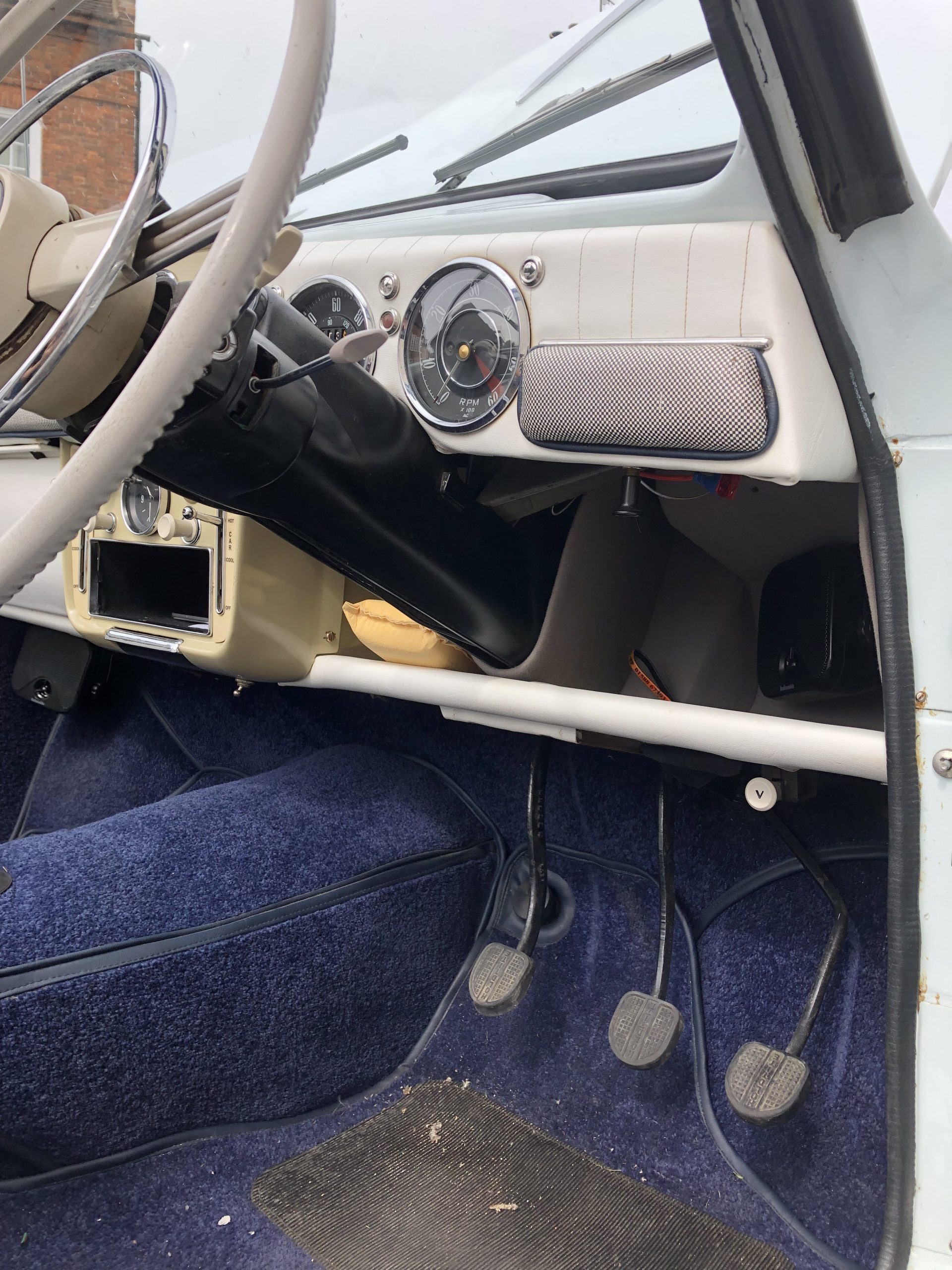
I had the pleasure of viewing a 1958 Sunbeam Rapier convertible the other day. The sun was shining and the hood was down. The driver had brought the car to us for some advice on power steering. As is the case with many (most) cars of this period, the steering efforts are unfashionably heavy for parking and low speed driving. Could power steering be installed?
A quick look under the bonnet confirmed the use of a steering box and links designed to avoid infringing the longitudinal power unit. A tricky start. However, the steering column was found to have a handy shelf surrounding it, which may provide space for a column mounted electric power steering unit (EPS). Just what most cars are fitted with today.
There are a number of companies specialising in the application of EPS to classic cars, so our client went away with a few words of advice and a list of suppliers to consult. We are always happy to provide consultancy (or a friendly chat) to fellow enthusiasts. Incidentally, did you know that the MGF was the first European production car to be fitted with column mounted EPS? Might be handy at your next pub quiz….
This encounter reminded me of our work with BMW on the ‘new’ (R50) Mini. Rover Group under BMW ownership could be a tense place to be, but for me it was a real time of opportunity – the chance to learn from experienced engineers and being given a sense of importance within Product Engineering. Chassis Development at BMW was a vital part of the business, and we were encouraged to do the same at Longbridge. I didn’t need telling twice.
Schwarzarbeit. ‘Dark work’. This was how my boss at BMW described the work that he wanted us to do in our UK Chassis Development workshop. He expected it to be done without discussion with our seniors in the UK. Looking up the translation just now, it seems to be ‘moonlighting’, so could have been a sackable offence. Or it could have been an inspired instruction, letting engineers do what they do best and make a car work properly.
The prototype R50 had a new form of electric power steering, where the assistance was provided by a motor into the rack bar. Very clever, tuneable with a laptop, providing speed proportional assistance and…… a dearth of ‘feedback’. Motoring journalists (and development engineers) have always praised useful steering feedback (as opposed to annoying ‘kickback’) even if the feedback is subjective, difficult to define and even more difficult to measure. There was an expectation that the Mini must be the most agile, responsive and fun to drive small car if it was to carry the name with credibility. Without steering ‘feedback’, it was clear that the new Mini was in trouble.
Dark work. Take a (very expensive) prototype Mini and remove the electric power steering. Add hydraulic steering and determine whether the lack of feedback was due to the steering system or the sum of the axle parts. I seem to remember we had it finished and ready for assessment in less than two weeks. The result? Clear. We now had a car which delivered an exciting driving experience, where the driver felt confident to push and know what was happening.
Job done. Well, not quite. The combined Rover and BMW Chassis Development teams then had to convince the Chassis Design, Project Management, Purchasing and Supplier teams that this really was required (at substantial cost and risk to timing). But as an Engineering led company, determined to provide excellent cars for the driver, the decision was made. An electro-hydraulic power steering system (EHPS) was fitted to the new Mini, giving fuel economy savings and speed proportional assistance. Unfortunately, it also provided the characteristic ‘whine’ from the motor pump unit when parking which identifies an early new Mini! A price worth paying for steering feel? We (and BMW) thought so.
Continuous improvement saw the introduction of a new column mounted EPS for the facelift model, removing the whine (but dare I say it, some of the feel). I wonder if this system will fit under the dashboard of a 1958 Sunbeam Rapier.
